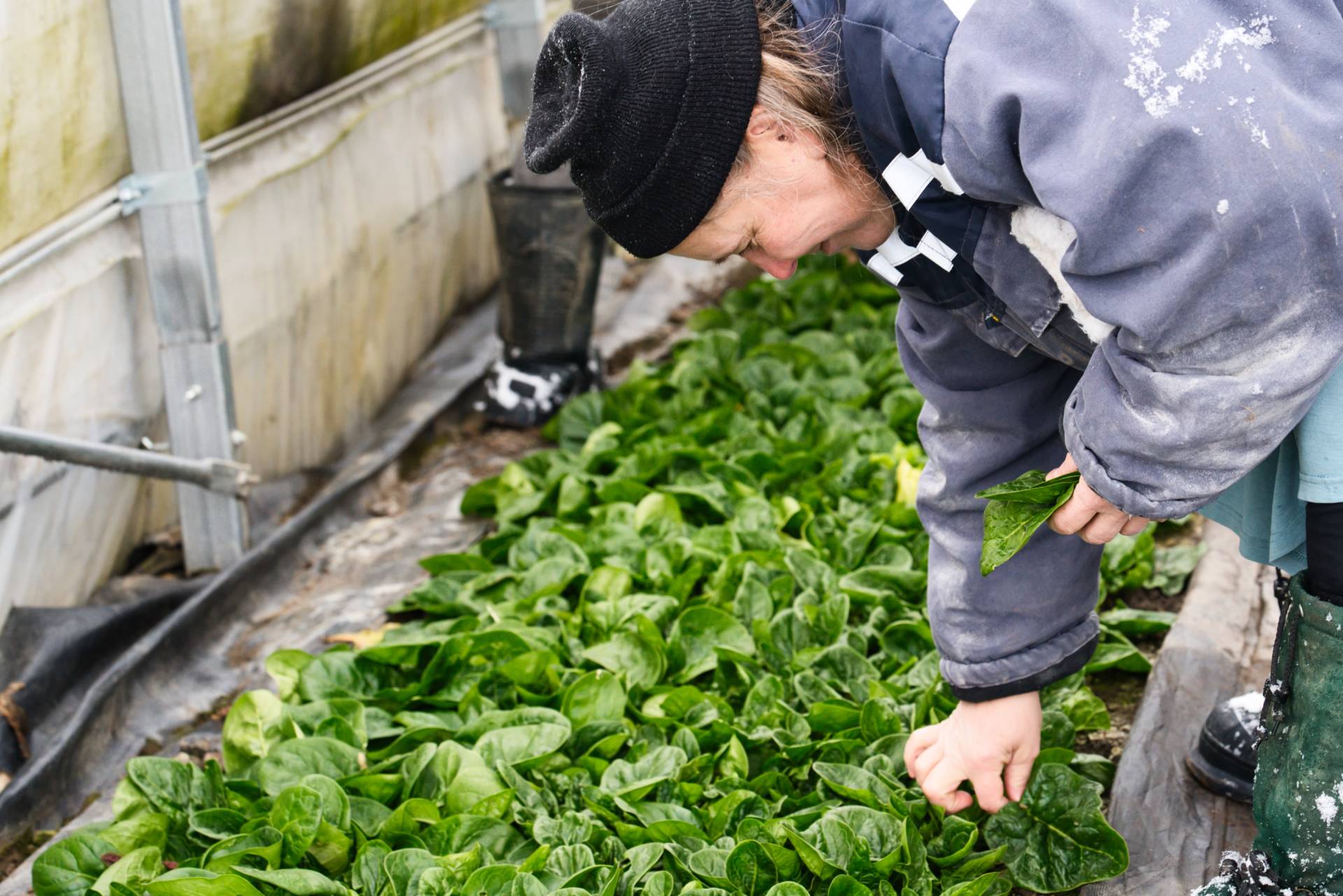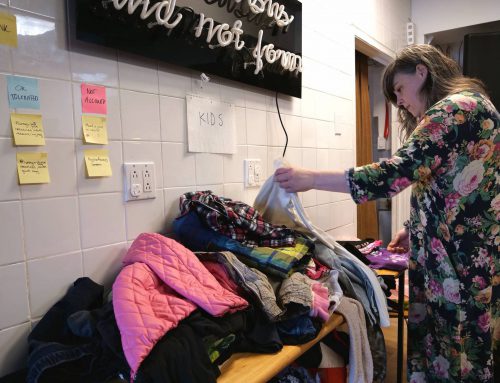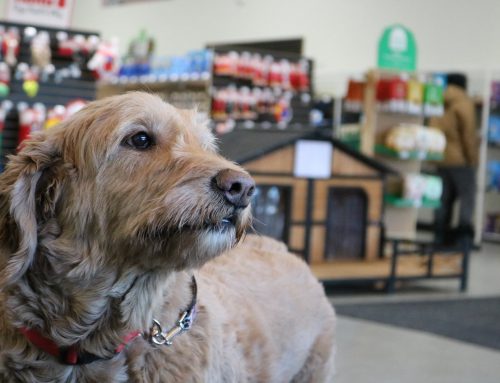BY Kaity Brady & Talia Kliot
Bruno St-Aubin was an illustrator and Carole Reid Forget was a teacher before they sold their property in St-Jean-sur-Richelieu to start Ferme Cabru in 2018, a small organic farm in St-Blaise-sur-Richelieu.
Encouraged by the success of other small and medium Quebec greenhouse farmers, they used $350,000 from the sale of their house to establish the farm. They want to expand in the coming years but face construction, financing, and staffing challenges.
“We would have needed about $1 million (to build the farm entirely),” Forget says.
In 2020, Quebec’s Agriculture and Energy and Natural Resources Ministers announced $100 million in funding to double the province’s greenhouse fruit and vegetable production to 250 hectares. Quebec’s Greenhouse Producers (PSQ), says Quebec is on track to exceed that target before 2025.
In early 2023, Quebec reached 50 percent self-sufficiency for greenhouse-grown fruit and vegetables.
While some farms have enjoyed rapid growth, the smallest Quebec farms still need help to expand. Ferme Cabru’s owners would like to add more greenhouses to their property, but they’re hesitant to take advantage of some government initiatives.
“You have to have money to get the money,” St- Aubin says, pointing to the complex and expensive process of setting up a greenhouse and applying for subsidies.
“The only way to make money is if you’re industrial weight,” Forget says. “We’re one small farm. We don’t want to be industrial, but how can we make enough that the farm is not losing too much money—to keep itself alive?”
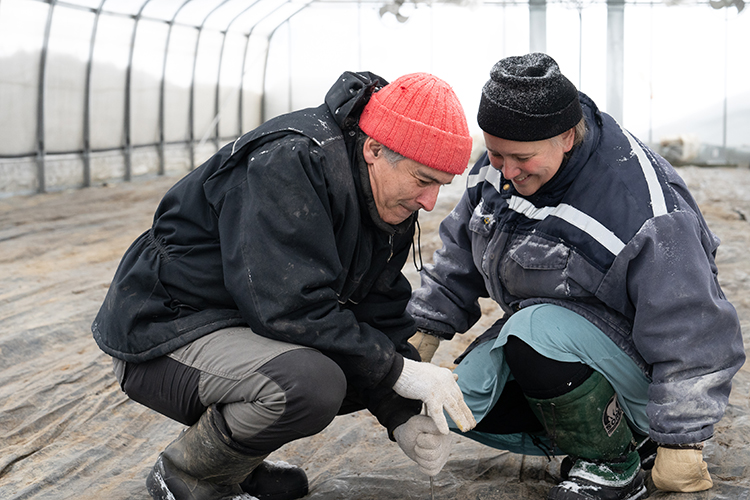
Carole Reid Forget and Bruno St-Aubin check soil temperature in the greenhouse. Photo by Kaity Brady.
Their business is currently making just enough to sustain them and one or two employees.
“We’ve had to diversify because it’s a bit up and down, (our) clientele,” Forget says.
Ferme Cabru attributes the success of the early pandemic years to attitudes about shopping at local businesses, and fears Quebecers had about food availability – but they saw this taper off.
The couple said the enthusiasm for local organic produce is high at the start of summer but tends to trail off. “So my geese eat a lot of tomatoes,” Forget says.
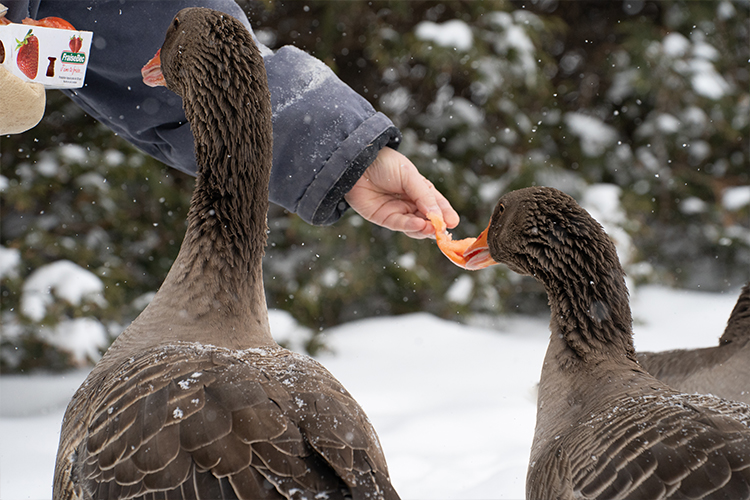
Carole Reid Forget feeds her geese leftover tomatoes. Photo by Kaity Brady.
Greenhouses aren’t the only budding businesses driving food autonomy in Quebec.
Ferme d’Hiver, a Quebec-based agri-tech company that grows strawberries in vertical farms all year round, produces roughly 1 million kilograms yearly at its facility in Vaudreuil, Quebec.
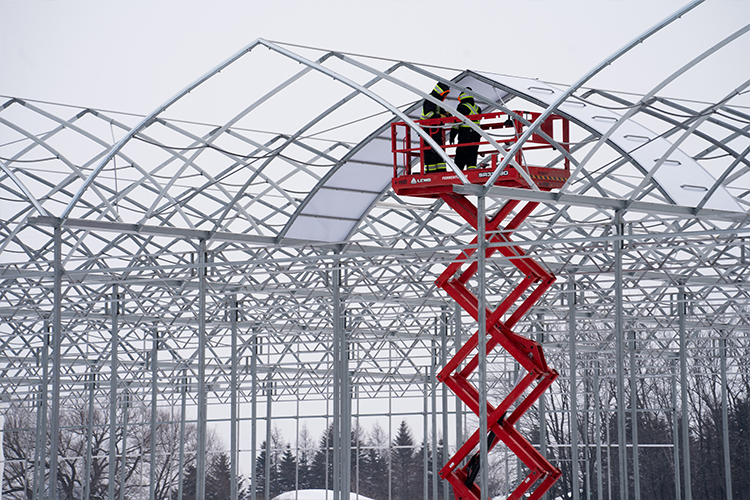
Vertical farm structures under construction at Ferme d’Hiver in Vaudreuil, Quebec. Photo by Kaity Brady.
It received significant funding from the provincial government to establish its vertical farm technology and hopes to be able to work alongside it to license it to other Quebec farmers in the coming years.
“It’s a global trend,” says Daphné Mailhot, Director of Communications at Ferme d’Hiver.
“There are a lot of players, and it’s much more intense in Asia, a bit in the United States, and Europe…because they have a lot of people to feed and not that much space. So we’re going to be facing that same problem around the world,” Mailhot says. “It’s an emerging industry in Quebec right now. Small-scale agriculture is very important, as well as industrial. It’s about combining ways to grow.”
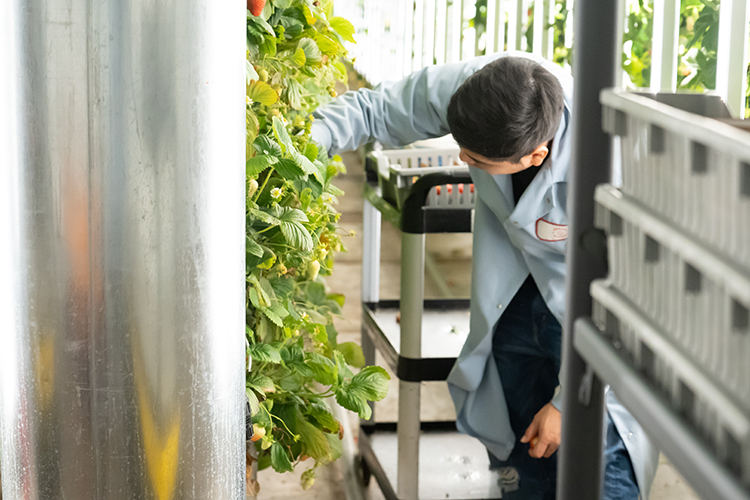
A Ferme d’Hiver employee harvests strawberries inside its vertical farm facility in Vaudreuil, Quebec. Photo by Kaity Brady.
She says that Quebec is an ideal candidate for vertical farming because we have winter to contend with and cheaper power than other provinces.
“The major issue in vertical farming around the globe is energy. Because we have to recreate the sun. Energy is better [in Quebec] than across Canada, and it’s clean energy and renewable,” Mailhot explains. “To fight importation, we must secularize our supply chain. The pandemic has shown us that it’s very fragile.”
One of the benefits of vertical farming compared to greenhouse farming is the ability to keep light and heat inside the cube-like structures, which can help reduce light pollution and energy waste.
A recent study shows a seven to 10 percent annual increase in sky brightness over the last 12 years. Greenhouses can contribute to light pollution when they don’t have the proper yet expensive infrastructure, negatively affecting the people and animals around them. Video by Talia Kliot.
Sylvain Charlebois, a researcher at Canada’s AgriFood Analytics Lab run out of Dalhousie University in Halifax, says when it comes to rising food costs, Quebec fares slightly better than most provinces.
“Quebec is the only province with a food autonomy policy – and that’s clearly helping,” he says.
Charlebois and his colleagues published a study in 2022 that compared the price of several categories of local and imported food products in Quebec. They found that in 71 percent of categories, Quebec products were either as cheap or cheaper than imported foods, including many fruits and vegetables.
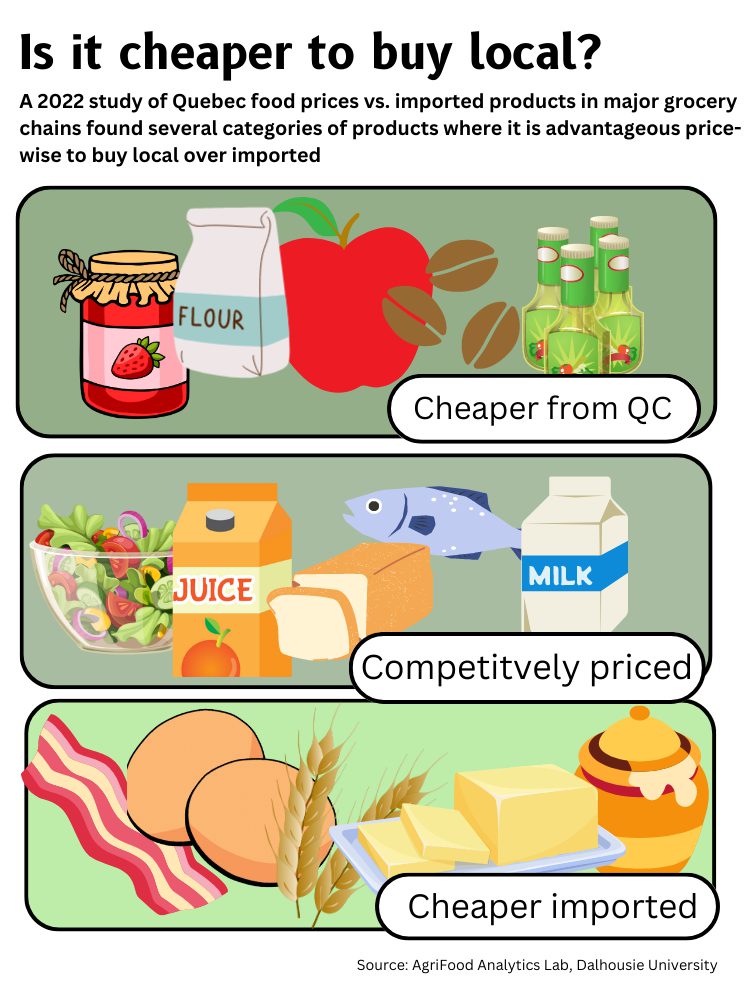
Local Quebec food price vs. imported prices. Media by Kaity Brady.
The AgriFood Analytics Lab 2023 Food Trends Report predicts that though food costs will continue to rise across Canada, Quebecers’ grocery costs could rise below the national average.
Despite the hurdles, Ferme Cabru’s owners still hope to expand in the coming years, ideally with five or six additional greenhouses and a house for up to 10 employees.
“If my plan for next year to have three employees doesn’t work, I’m not sure what we’ll do. We’re reconsidering everything,” St-Aubin says.
Carole enrolled in a farm management course at CEGEP, and Bruno is looking to work outside the farm to bring in some money. They hope to expand in a way that keeps their farm afloat but doesn’t sacrifice their employee’s quality of life or the principles and methods of small-scale organic farming.
“We’re going to build vegetable things, we have our chickens and our bees, and we have little baby geese,” Forget says. “And we’re going to see people happy to eat good food. This is the joy of living on the farm that we want.”
